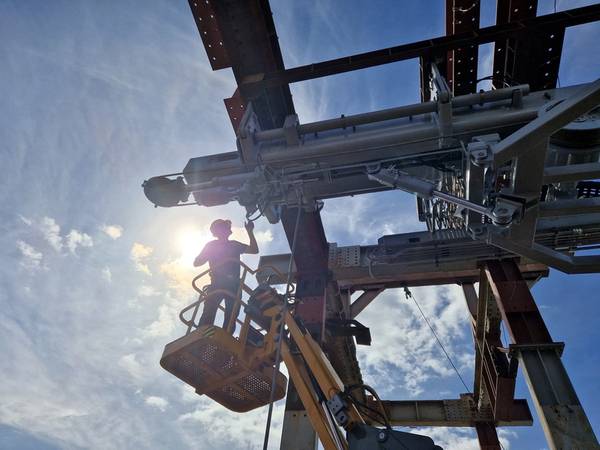
Norwegian davit supplier Vestdavit has notched up a new annual sales record for another consecutive year after seeing its order intake surge by 76% in 2023 on high demand from the offshore wind and oil and gas sectors, as well as increased sales in its core naval market.
Vestdavit has expanded its market position in offshore wind after both gaining new customers and winning repeat orders with existing clients, including Esvagt and Rem Offshore, with orders in this sector accounting for more than $9.4 million (NOK 100 million), or 30% of the overall sales volume.
“We now have around 80% of all offshore wind vessel operators using our davits, based on our strong reputation for supplying highly robust boat-handling systems that are user-friendly and have low maintenance costs,” said Tarjei Isaksen, Vestdavit’s Sales and Business Development Director.
Furthermore, the company has secured a much higher number of orders for prototype davit projects, which reflects the increasing demand for customized solutions, Isaksen added.
Vestdavit has sold as many as 15 davits over the past 18 months for the offshore wind sector alone.
With rapid expansion of the global offshore wind industry, there is now increasing ordering activity for construction service operation vessels used for installation and maintenance of wind turbines, and these require workboat davits with a high degree of regularity as they are used on a daily basis.
Isaksen points out that deploying workboats with maintenance crews can be more suitable in certain weather conditions as such craft have greater mobility than walk-to-work gangways that require frequent maneuvering to different locations by the mother vessel to take personnel back and forth.
Vestdavit is also increasing deliveries to the oil & gas industry that accounted for 15% of its orders last year, up significantly from 2022, with its davits mainly being installed on construction support vessels used to develop field projects, as well as cable-laying vessels.
Upswing in Naval Sector Orders
The global naval sector remains the biggest market for Vestdavit, currently accounting for about 50% of sales, and the company has secured further orders to consolidate its leading position, which is predicated on a 40-year track record of supplying innovative davit systems with proven reliability for navies around the world, including the US, UK and Australia.
While the U.S. is the company’s biggest naval market, its davits are in use by the vast majority of navies within the Nato alliance and it also secured its first naval orders in Canada and Colombia last year, according to Isaksen.
One of the sales highlights for the company last year was securing its single biggest-ever order to the tune of $5.84 million (NOK 62 million), which was awarded by an undisclosed Nato naval customer for multiple davits to be installed on three newbuild vessels.
Vestdavit is also seeing increasing naval interest for its innovative Mission Bay concept, with an enclosed hangar within the hull of a ship from which various craft are deployed via a track system, which has previously been delivered for two Nexans newbuild cable-layers at Norway’s Ulstein Verft yard.
Meeting Demand with Larger Team
With the significant uptick in orders, Vestdavit has embarked on a corporate expansion with recruitment of additional sales, project management and technical personnel that has resulted in a 25% increase in staff at its Bergen head office after Isaksen was brought onboard last summer. The company is also expanding the capacity of its production facility in Poland to cope with increased davit demand.
Sales so far this year have already exceeded the orders tally for the whole of 2021, with offshore wind accounting for about 25%, and Isaksen is confident of continued solid growth in 2024.
“We are on course for another strong year based on the market trends of higher naval activity as well as accelerating development of offshore wind and other energy projects,” Isaksen concluded.